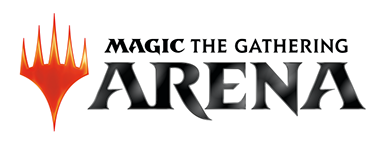
Magic the Gathering invented the modern Collectable Trading Card (TCG) genre, and is still going strong decades later. Wizards, however, found its efforts in the digital space lacking, and wanted a fresh start for a AAA digital version of Magic, especially after the arrival of Hearthstone.

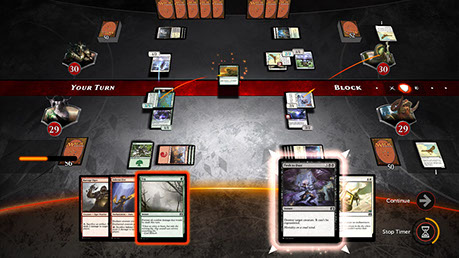
Magic the Gathering Online ("MTGO", left) and Magic Duels ("Duels", right) are the first efforts by Wizards to bring Magic to computers, with neither achieving the success that was hoped for. Duels is an incomplete version of Magic, and is graphically mediocre. MTGO is a faithful digital version of Magic, but is unalterably rooted in old technology, and again, is graphically substandard. Neither game points in a acceptable direction for Magic to compete against the latest generation of digital TCGs. Magic needed a complete gameplay client, with modern graphics and an easy user interface to such a complicated game.
I was hired to join the fledgling Magic Arena project, and saw some immediate needs that neither digital offering yet supplied. For Arena, I first outlined the goals:
- Magic Arena should look like it belongs to the Magic: the Gathering IP. It should not be mistaken for any other fantasy IP, and should raise the bar on the level of polish and robustness beyond current Magic digital offerings, to be visually competitive. It continues the paper MtG design imperatives of modern aesthetic, constrained palette, bolder-than-life imagery, and high fantasy.
- Magic Arena should be relatable and visceral. The content of Magic: the Gathering is fantastical, and is expressed in a multitude of ways. Magic Arena should provide a believable context to allow the fantastic to be as impactful as possible. Relatability is vital to a comprehensible user experience, and a visceral feel is needed for emotional impact.
- Magic Arena should make gameplay feel important and consequential. Planeswalkers cast awesome spells and summon imagination-beggaring creatures, and these events should be satisfyingly dramatic. Player decisions should feel significant, and the scale of success should be reflected in the scale of the effect.
With those as the guiding principles, we set out to build a production team for a more compelling digital Magic.
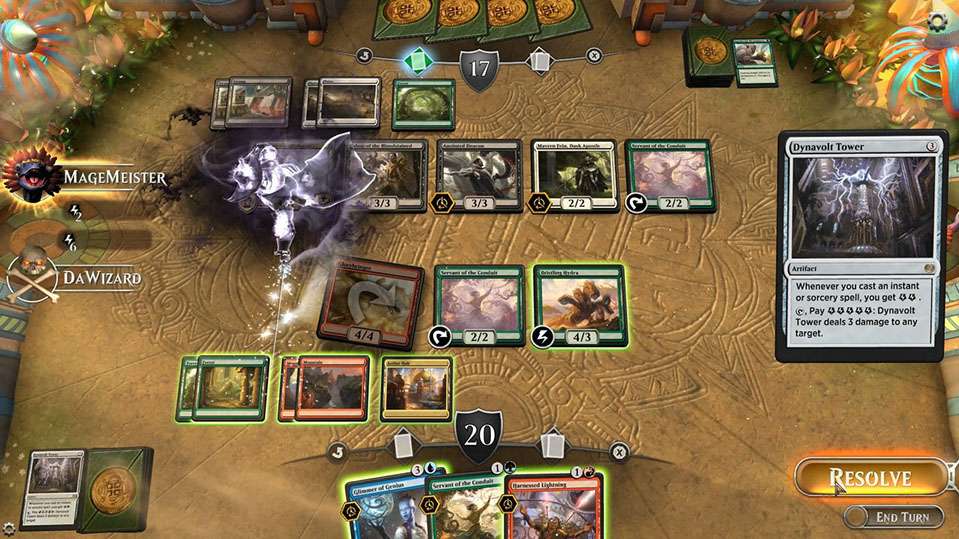
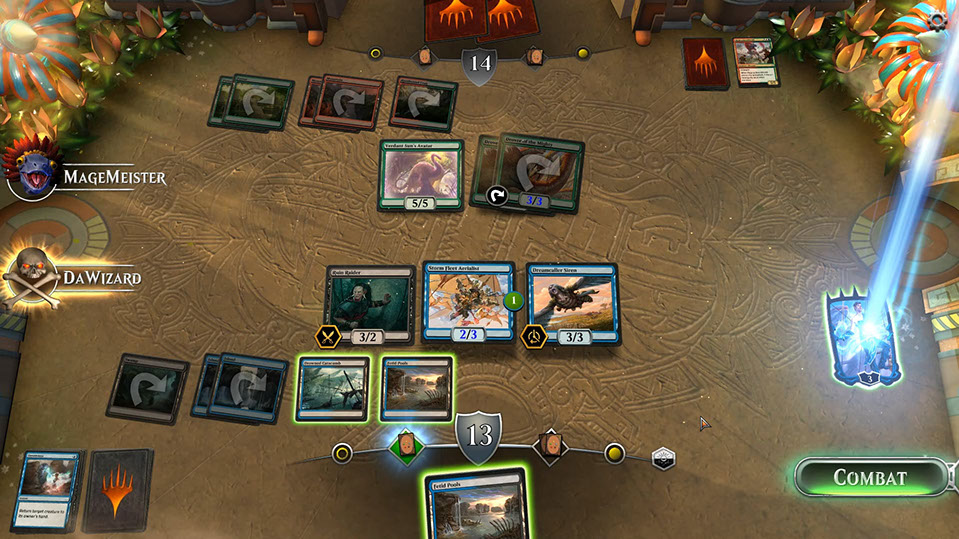

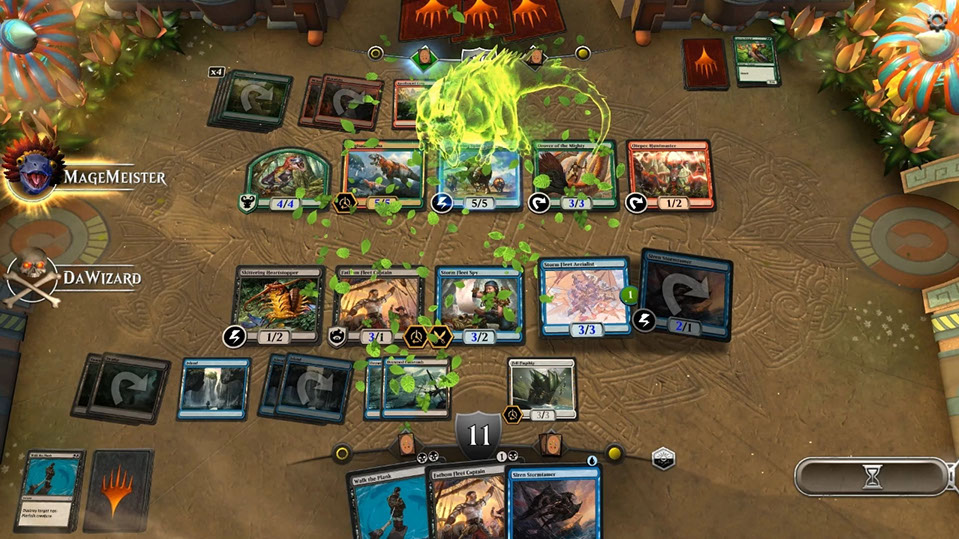


<
>
Note that this slideshow includes pre-release images, as well as post-ship images that reflect a time after I left Wizards. They are included as examples of the direction I laid out.
The first thing was to bring more of the worlds of Magic into the game by way of the battlefields. MTGO and Duels do nothing to bring the IP into the screen, so leveraging the incredible work that is done concepting each world was an obvious move.
Reducing screen noise by simplifying cards in play was also critical: at gameplay size, card text is essentially unreadable, so both MTGO and Duels dedicated screen space to something unhelpful, and which only served to make the beautiful card art smaller. A Card Examination display showed the full card, but the in-play representations were dedicated to streamlining important information, and eliminating distractions.
Other shifts away from straight mimicry of the analogue game included differently shaped cards for tokens, planeswalkers, and other cards and abilities; a modified visual for card tapping, to make it both clearer and more appealing than simply turning the card 90 degrees clockwise; iconic representations of important keywords on cards, to make it immediately clear what threats or abilities some cards represented; and entrance VFX for the most important cards within each set, to make playing them during the game a memorable "Oh wow" moment.
Of course the interface to the full complexity of Magic took many, many iterations. An important aspect of new Magic cards is how they change the rules of the game in unique ways, adding new functionality that was never present before. Designing an interface and battlefield for this, where no single decision may be unalterable, while also creating a UI that would not completely flummox a new player, as well as insuring it could be a mouseless touch-only interface for other platforms, was the most difficult UI task I have ever encountered, and took a team of people many completely different versions to find optimal solutions to some of Magic's unique gameplay aspects.